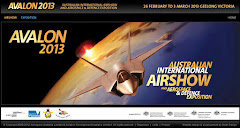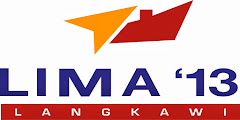20 Februari 2006

Fantail-vertical take-off and landing (VTOL) UAV (photo : ST-Aero)
Singapore Technologies Aerospace (ST Aero) is expecting to fly a prototype of its FanTail 5000 vertical take-off and landing (VTOL) unmanned aerial vehicle (UAV) for the first time in March.
A mock-up of the UAV made its first show appearance at Asian Aerospace 2006 in Singapore (21-25 February), along with the smaller original FanTail 3000 VTOL UAV, which has already flown about 100 hours.
Dr Tan Jiak Kwang, director of ST Aero's advanced systems department, said the move from a 3 kg platform to a 5.5 kg variant was an effort to improve capability and includes a larger engine.
FanTail 5000 has a payload weight of 0.4 kg, a maximum level speed in horizontal position of 111 km/h and an endurance of 30 minutes in hover at an operating distance of 5 km.
(Jane’s)
See also :
ST Aero FanTail
30 Januari 2007
 ST-Aero Fantail UAV (photo : STAero)
ST-Aero Fantail UAV (photo : STAero)Design began in September 2001. Revealed in February 2002, at which time it was a joint development between Singapore Technologies Dynamics and US company Micro Autonomous Systems LLC under the product name Mini TailSitter. These companies subsequently pursued separate lines of development, the Singapore programme transferring to ST Aero under the current name of FanTail.
As of February 2002, the Mini TailSitter prototype had made approximately 300 test flights. Subsequent ST Aero development has resulted in a quieter engine, a new video payload, and the ability to be flown entirely autonomously under GPS guidance and control from a laptop or other small computer.
By February 2004, the basic FanTail 3000 was declared by ST Aero to be "almost market-ready". By the February 2006 show, its flight time had totalled about 100 hours and a maiden flight of the larger FanTail 5000 was said to be due in the following month, although no such report had been seen by early 2007.
The aircraft's ability for hover and low-speed vertical flying allows precise manoeuvring along streets or between trees, buildings and other obstacles. Control surface effectiveness allows it to withstand strong winds and gusty conditions, and it is scalable up to virtually any size required by a customer. It is seen as particularly suitable for MOUT (military operations in urban terrain) missions, although civil roles are also envisaged.
(Jane’s)










Tidak ada komentar:
Posting Komentar